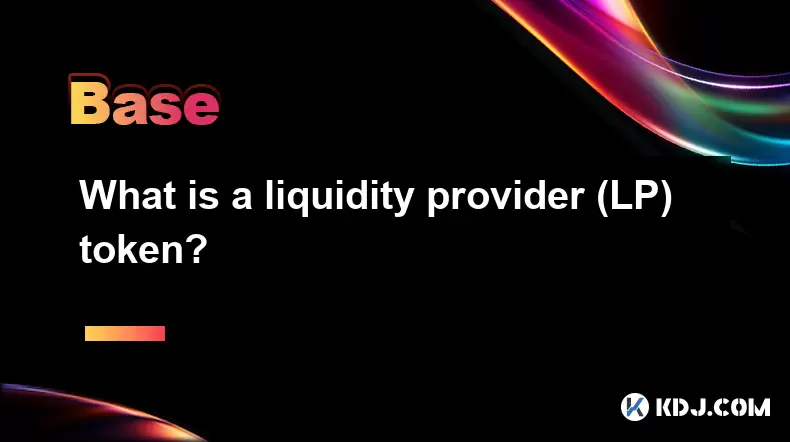-
 Bitcoin
Bitcoin $108,250.0992
0.11% -
 Ethereum
Ethereum $2,515.9404
0.03% -
 Tether USDt
Tether USDt $1.0003
0.00% -
 XRP
XRP $2.2166
-0.19% -
 BNB
BNB $656.5904
0.29% -
 Solana
Solana $147.4122
-0.58% -
 USDC
USDC $1.0000
-0.01% -
 TRON
TRON $0.2830
0.06% -
 Dogecoin
Dogecoin $0.1641
0.27% -
 Cardano
Cardano $0.5739
-0.19% -
 Hyperliquid
Hyperliquid $39.1463
-0.11% -
 Sui
Sui $2.8882
-0.02% -
 Bitcoin Cash
Bitcoin Cash $487.6428
0.31% -
 Chainlink
Chainlink $13.2097
0.07% -
 UNUS SED LEO
UNUS SED LEO $9.0308
0.10% -
 Avalanche
Avalanche $17.8608
0.13% -
 Stellar
Stellar $0.2379
-0.06% -
 Toncoin
Toncoin $2.7400
-0.39% -
 Shiba Inu
Shiba Inu $0.0...01144
-0.36% -
 Litecoin
Litecoin $87.5467
0.66% -
 Hedera
Hedera $0.1538
0.22% -
 Monero
Monero $315.5479
0.36% -
 Dai
Dai $1.0000
0.00% -
 Polkadot
Polkadot $3.3523
-0.71% -
 Ethena USDe
Ethena USDe $1.0003
0.01% -
 Bitget Token
Bitget Token $4.3960
-1.03% -
 Uniswap
Uniswap $7.2663
4.19% -
 Aave
Aave $272.8619
2.04% -
 Pepe
Pepe $0.0...09676
-0.18% -
 Pi
Pi $0.4586
-2.87%
What is a liquidity provider (LP) token?
Liquidity Provider (LP) tokens represent ownership in DeFi liquidity pools, enabling users to earn trading fees and participate in yield farming.
Jul 06, 2025 at 04:21 am

Understanding the Concept of a Liquidity Provider (LP) Token
A liquidity provider (LP) token is a digital asset issued to users who supply liquidity to decentralized finance (DeFi) platforms, particularly within automated market maker (AMM) protocols like Uniswap, SushiSwap, or PancakeSwap. When a user deposits funds into a liquidity pool, they receive LP tokens in return, representing their share of the total liquidity in that pool.
These tokens are essential because they act as proof of contribution and entitle the holder to a portion of the trading fees generated by the platform. The amount of fees earned corresponds directly to the proportion of the pool owned by the liquidity provider. This mechanism ensures fair distribution of rewards among participants.
Each LP token is unique to the specific liquidity pool it was minted from.
How LP Tokens Are Created and Distributed
When a user contributes assets to a liquidity pool, the protocol mints new LP tokens and sends them to the provider's wallet. For example, if you deposit ETH and USDT into an ETH-USDT pool on Uniswap, you will receive UNI-V2 LP tokens in exchange. These tokens can be held, traded, or used in other DeFi applications for additional yield opportunities.
The creation of LP tokens is governed by smart contracts. These contracts automatically calculate the ratio of deposited assets and issue the appropriate number of tokens based on current pool reserves.
- Step 1: Connect your wallet to the DeFi platform.
- Step 2: Navigate to the "Liquidity" section.
- Step 3: Select the desired token pair.
- Step 4: Input the amount of each token to deposit.
- Step 5: Confirm the transaction via your wallet.
- Step 6: Receive LP tokens in your wallet after successful execution.
This process is trustless and transparent, relying entirely on blockchain technology and smart contract execution.
The Role of LP Tokens in Yield Farming
Many DeFi protocols allow users to stake their LP tokens in yield farming contracts to earn additional rewards. These rewards often come in the form of governance tokens or newly issued native tokens from the platform. By staking LP tokens, users contribute to the ecosystem while maximizing returns on their deposited assets.
For instance, a user could provide liquidity on SushiSwap and then stake the received SLP (Sushi Liquidity Provider) tokens in a farm to earn SUSHI tokens. This dual-income model—earning trading fees plus reward tokens—has become a popular strategy in DeFi.
Yield farming with LP tokens increases capital efficiency but also introduces additional risk factors such as impermanent loss and smart contract vulnerabilities.
Risks Associated with Holding LP Tokens
While LP tokens offer earning potential, they also carry several risks:
- Impermanent Loss: Occurs when the price of deposited assets changes compared to when they were initially added to the pool. This results in a temporary loss relative to holding the assets outside the pool.
- Smart Contract Risks: Bugs or exploits in the code governing liquidity pools can lead to fund losses.
- Token Volatility: High volatility in underlying assets may amplify impermanent loss.
- Withdrawal Delays: Some protocols impose lock-up periods or delays before liquidity can be withdrawn.
It's crucial for users to understand these risks before engaging in liquidity provision or staking activities.
Impermanent loss becomes permanent only when liquidity is withdrawn during unfavorable price conditions.
How to Manage and Use LP Tokens Effectively
To make the most of LP tokens, users should consider several strategies:
- Diversify Across Pools: Spreading liquidity across different pairs can reduce exposure to any single asset’s volatility.
- Monitor Fees and Rewards: Regularly check the performance of your liquidity position and compare it against alternative investment strategies.
- Use Analytics Platforms: Tools like Dune Analytics or DeFi Pulse help track earnings and assess impermanent loss.
- Avoid High-Risk Pools: Newer or less-audited projects may pose higher security risks.
Additionally, some advanced users participate in flash loans or cross-chain arbitrage, leveraging LP tokens to exploit inefficiencies across DeFi ecosystems.
Always review the smart contract addresses and audit status before interacting with any liquidity pool.
Frequently Asked Questions (FAQs)
Q: Can I transfer my LP tokens to another wallet?
Yes, LP tokens are standard ERC-20 tokens (or equivalent on other blockchains), which means they can be freely transferred between wallets just like regular tokens.
Q: What happens to my LP tokens if I remove liquidity from the pool?
When you remove liquidity, your LP tokens are burned, and you receive back the proportional amount of the deposited assets along with accrued trading fees.
Q: Are LP tokens compatible with all DeFi platforms?
No, compatibility depends on the platform. While many DeFi protocols accept common LP tokens for staking or lending, others may not support them due to integration limitations.
Q: Can I lose money by holding LP tokens?
Yes, due to impermanent loss and smart contract risks, holding LP tokens does not guarantee profit and may result in financial loss depending on market conditions and protocol stability.
Disclaimer:info@kdj.com
The information provided is not trading advice. kdj.com does not assume any responsibility for any investments made based on the information provided in this article. Cryptocurrencies are highly volatile and it is highly recommended that you invest with caution after thorough research!
If you believe that the content used on this website infringes your copyright, please contact us immediately (info@kdj.com) and we will delete it promptly.
- Litecoin Breakout Watch: What Traders Need to Know Now
- 2025-07-06 16:50:13
- Bitcoin, Solana, Ethereum: Decoding the Latest Buzz on the Blockchain
- 2025-07-06 16:50:13
- Widnes Resident's 50p Could Be Your Ticket to Easy Street: Rare Coin Mania!
- 2025-07-06 16:55:13
- Bitcoin, Solaris Presale, and Token Rewards: What's the Buzz?
- 2025-07-06 16:55:13
- Ethereum Under Pressure: Price Drop Amid Global Uncertainties
- 2025-07-06 17:00:13
- XRP, SEC Case, and Prosperity: A New Era for XRP Holders?
- 2025-07-06 17:10:13
Related knowledge

What is a user-generated content (UGC) NFT platform?
Jul 04,2025 at 01:49pm
Understanding the Concept of a UGC NFT PlatformA user-generated content (UGC) NFT platform is a digital marketplace or ecosystem where users can create, mint, and trade non-fungible tokens (NFTs) that represent ownership of original digital content they produce. Unlike traditional NFT platforms where creators often include professional artists or develo...

What is composability in DeFi?
Jul 06,2025 at 04:07pm
Understanding the Concept of Composability in DeFiComposability in DeFi refers to the ability of decentralized finance protocols and smart contracts to interact seamlessly with one another, much like building blocks that can be combined in various ways to create new financial products and services. This concept is a core innovation within the DeFi ecosy...

What is a "crypto primitive"?
Jul 05,2025 at 10:14pm
Defining the Concept of a Crypto PrimitiveIn the context of blockchain and cryptocurrency, a crypto primitive refers to a fundamental building block or foundational element used in constructing decentralized systems and cryptographic protocols. These primitives are essential for enabling secure transactions, consensus mechanisms, and smart contract exec...

What is a fair launch?
Jul 05,2025 at 07:31pm
Understanding the Concept of a Fair LaunchA fair launch refers to the release of a cryptocurrency or blockchain project in a manner that ensures equal opportunity for all participants. Unlike traditional token launches, which may involve private sales, venture capital funding, or pre-mining, a fair launch emphasizes transparency and decentralization. In...

What is a cliff in tokenomics?
Jul 05,2025 at 07:18pm
Understanding the Concept of a Cliff in TokenomicsIn the world of cryptocurrency and blockchain, tokenomics plays a pivotal role in shaping the economic behavior of a digital asset. One of the key mechanisms used to manage token distribution is known as a cliff. This concept is commonly applied in projects that include vesting schedules for tokens, espe...

What is a token generation event (TGE)?
Jul 04,2025 at 07:14am
Understanding the Basics of a Token Generation Event (TGE)A Token Generation Event (TGE) refers to the process through which a blockchain project creates and distributes its native tokens to investors, participants, or stakeholders. This event is often associated with new cryptocurrency projects launching on platforms like Ethereum, Binance Smart Chain,...

What is a user-generated content (UGC) NFT platform?
Jul 04,2025 at 01:49pm
Understanding the Concept of a UGC NFT PlatformA user-generated content (UGC) NFT platform is a digital marketplace or ecosystem where users can create, mint, and trade non-fungible tokens (NFTs) that represent ownership of original digital content they produce. Unlike traditional NFT platforms where creators often include professional artists or develo...

What is composability in DeFi?
Jul 06,2025 at 04:07pm
Understanding the Concept of Composability in DeFiComposability in DeFi refers to the ability of decentralized finance protocols and smart contracts to interact seamlessly with one another, much like building blocks that can be combined in various ways to create new financial products and services. This concept is a core innovation within the DeFi ecosy...

What is a "crypto primitive"?
Jul 05,2025 at 10:14pm
Defining the Concept of a Crypto PrimitiveIn the context of blockchain and cryptocurrency, a crypto primitive refers to a fundamental building block or foundational element used in constructing decentralized systems and cryptographic protocols. These primitives are essential for enabling secure transactions, consensus mechanisms, and smart contract exec...

What is a fair launch?
Jul 05,2025 at 07:31pm
Understanding the Concept of a Fair LaunchA fair launch refers to the release of a cryptocurrency or blockchain project in a manner that ensures equal opportunity for all participants. Unlike traditional token launches, which may involve private sales, venture capital funding, or pre-mining, a fair launch emphasizes transparency and decentralization. In...

What is a cliff in tokenomics?
Jul 05,2025 at 07:18pm
Understanding the Concept of a Cliff in TokenomicsIn the world of cryptocurrency and blockchain, tokenomics plays a pivotal role in shaping the economic behavior of a digital asset. One of the key mechanisms used to manage token distribution is known as a cliff. This concept is commonly applied in projects that include vesting schedules for tokens, espe...

What is a token generation event (TGE)?
Jul 04,2025 at 07:14am
Understanding the Basics of a Token Generation Event (TGE)A Token Generation Event (TGE) refers to the process through which a blockchain project creates and distributes its native tokens to investors, participants, or stakeholders. This event is often associated with new cryptocurrency projects launching on platforms like Ethereum, Binance Smart Chain,...
See all articles

























































































